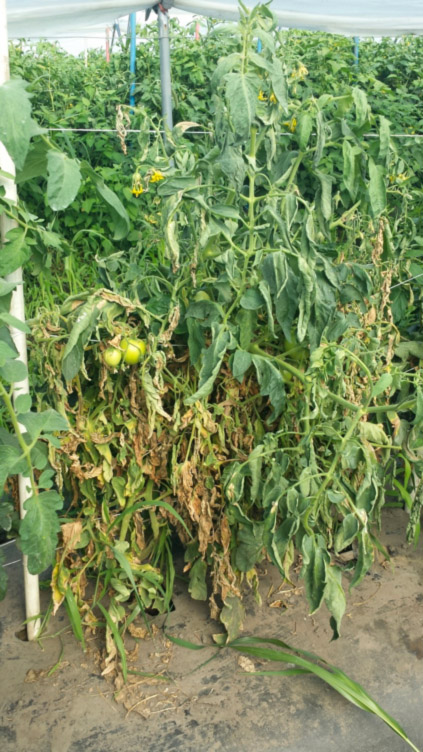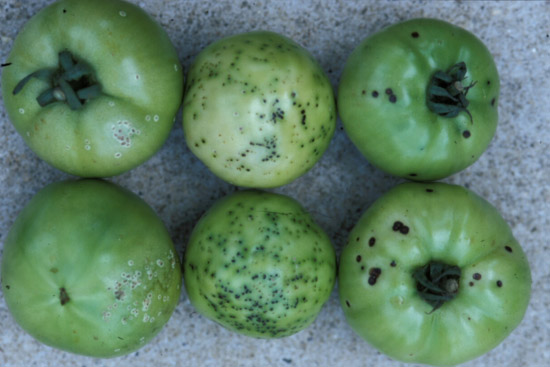Issue 13, August 9, 2013
Got Spots on your Tomatoes?
This year, many bacterial diseases are being reported in tomatoes. First of all, when tomato foliage is infected with bacterial diseases, they can be easily misdiagnosed as other diseases. So, the first step is proper diagnosis, which can be obtained by submitting a sample to the U of I Plant Clinic. We are able to diagnose bacterial diseases on tomato in our lab by cutting lesions and placing them under a microscope. If we see microscopic, bacteria oozing from the infected plant material, we know that we are dealing with a bacterial disease. Improper diagnosis will lead to mismanagement!
Bacterial spot (Xanthamonas campestris pv. vesicatoria) and Bacterial speck (Pseudomonas syringae pv. tomato) are very difficult to differentiate based on foliar symptoms, because they both can cause spots to occur on all above ground parts of the plant. They can be easily misdiagnosed as the fungal disease, Septoria leaf spot. Most of the time, there is no need to differentiate between bacterial spot and bacterial speck, because controls for both of these diseases are the same! We can differentiate between these two bacterial pathogens by culturing and isolating in the lab. If Pseudomonas (Bacterial Speck) is cultured on a special agar called King's B, the bacterial growth will glow when exposed to a black light (ultraviolet light) and we think this is pretty groovy!
Bacterial Canker (Clavibacter michiganensis subsp. Michagensis) is another disease that once infected, the plant will have vascular discoloration, wilt, and scorching of leaf tips and infection is considered "devastating" to the plant. There is no cure for this disease. This bacterial disease can be misdiagnosed as bacterial wilt as well as other fungal wilts. The U of I Plant Clinic uses Agdia ELISA quick strip tests to aid in the diagnosis of Bacterial canker.

Bacterial canker infected tomatoes in a high tunnel
What do bacterial spot, bacterial speck, and bacterial canker all have in common? They all can cause the tomato fruit to have spots. These spots can be used (not always) as a diagnostic aid.

Bacterial canker (left), Bacterial speck (center), and Bacterial spot (right). (Photo provided by Dr. M Babadoost)
Other ways to help differentiate these bacterial diseases can be found in the following chart:

Bacterial spot and bacterial speck management (IPM)
- When purchasing transplants, inspect them carefully for disease
- Disease can survive on the seed, so make sure it has be certified to be disease free
- There are no cultivars that are completely resistant to Bacterial spot and some lines hold up to Bacterial speck better than others
- Avoid splashing water if possible
- minimize that time that foliage remains wet
- Do not spray, tie, harvest, or handle plants when they are wet
- Avoid the spread of disease on volunteers, weeds, and plant debris (over winter in soil)
- Never plant tomatoes in the same spot 2 years in a row (2 to 3 years between tomato corps)
- Peppers can also be susceptible to bacterial spot and spread to tomatoes
- Copper products can protects uninfected plants or fruit/foliage
- Read label directions carefully. Copper has been known to cause phytoxicity to plants.
(Stephanie Porter)
Author:
Stephanie Porter